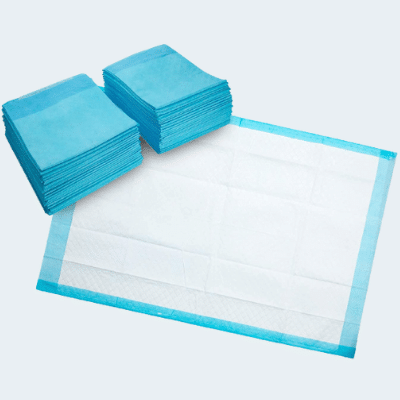It looks very disgusting when your cat strews litter all over the litter box, isn’t it? Later on, the litter began to spread throughout the house. Cats are undoubtedly clean and tidy at home, but litter gets stuck in their fur and gets dispersed wherever they go owing to their fuzzy skin. In such a case, cat litter mats appear to be ideal.
Keeping a cat’s hygiene in order can be a difficult task. Every cat needs a litter box, and it is the pet parent’s responsibility to keep the litter box in good working order, as the litter box is critical to the cat’s hygiene. A cat litter trapper mat is a little mat beneath the litter box, that mostly traps the litter so, the question that arises here is how to clean litter mat.
How does the litter mat work?
Cats tend to walk inside the litter box before excreting, resulting in waste and litter spilling all over the place. When a litter trapper mat is present, the debris that spills out of the box lands directly on the mat, keeping the floor squeaky clean and dry.
The black hole litter mat is an ingenious two-layer design that allows cat litter to fall through the holes on the top layer and then get trapped on the bottom layer. After your cat has completed using the litter box, ensure no nasty stray cat litter outside of it. The layers can also be readily separated, allowing you to discard all of the contained debris.

If you have one or more cats at home, you’re probably familiar with the procedure of cleaning the litter box and the area surrounding it. So for your ease, the best method of cleaning litter mat is here to keep your cat safe.
How to clean litter mat?
It’s no secret that cats are picky, and their demand for cleanliness extends to their litter box as well. Your cat may decide to “go” somewhere else if the box is excessively full, untidy, or smelly. A good kitty litter mat can help you manage clutter and keep your home tidy.

For your cat’s box, a litter mattress works similarly to the other side of a doormat, catching and detaching a significant amount of the litter that falls across their paws. It’s not as challenging as it appears to clean a cat litter trapper mat. The cleaning process may be carried out in different ways:
1. Using a vacuum cleaner:
Vacuuming is an excellent approach for removing any stuck debris or waste clumps accumulated on the cat litter trapper mat. You can use a small or more significant vacuum cleaner for this process or take your carpet out in the open and suck it off.
2. Combination of water and an enzyme cleaner:
If there is a lot of wet waste, pee on the mat, or smells exceedingly terrible, cleaning it with water is the best option. To completely clean it, use a mild enzymatic liquid cleaner, apply it with a wet sponge all over the mat, and leave it on for a few minutes. Rinse it off using a yard hose or any other flowing water source.
3. By sprucing it up and putting it out in the open:
Picking up the mat and dusting it out in the open is ideal for a fuss-free cleaning strategy. Please keep in mind that this method works best with dry waste. With these feasible and straightforward steps, you can have a clean cat litter trapper mat in no time.
4. Handwashing:
Flushing is an integral cleaning approach for cleaning litter mats. If your feline tends to spit or discharge, be sure to clean the mat by flushing it with water. You might need to use an animal-friendly cleanser on the exterior of the litter pad and need to rub it in for cleaning perfectly and gently. The litter pad is waterproof and may be washed by hand or hosed down with a cleanser and water in a basin or bowl.
Experts recommend using a liquid hand dishwashing cleanser or another gentle cleanser. Cleaning the mat with harsh synthetic agents like bleach is not recommended. It is not recommended to wash the mat in the washing machine. Also, never put your cat litter pad in the dryer; it can liquefy and cause terrible damage to your cat.
Benefits of Using a Cat Litter Mat
A litter mat is a unique floor covering designed to capture litter from your cat’s paws, preventing them from fouling the house. These mats are typically placed near the feline litter box to keep any litter from becoming stuck in the paws and claws of the cat. A strong feline litter mat keeps litter from spreading while remaining comfortable for the cat to walk on.

They can also flip out the tray and become stuck in your cat’s paws when in use. They drag their litter behind them when they depart for other parts of the house. This could imply that cat owners spend more time cleaning their homes than playing and socializing with their pets.
There’s absolutely nothing you can do to stop it, but the undeniable alternative is to sweep it up. However, as you may be aware of their procedure. A feline litter pad and a litter box are the best options a great way to keep litter from flying out and getting tangled in your cat’s paws.

Tip for Litter Control
Significantly, your litter box and mat must be strategically placed for the littermates to be practical. One of the most common problems people face is that their cat kicks and dumps litter into the air, causing it to fly out of the litter box and onto their litter mat.
If the litter passes over your litter mat, there’s no way to catch it before it flies away. This may appear strange, and as an entity your cat dislikes, but it is the best way to keep litter from totally emptying into the litter mat, and it is an entity that most felines adore.
If you’re using a litter box with a single entrance and an encased cover, situate the opening against the wall rather than facing the room. Allow plenty of room for your cat to enter and exit the container. Place your mat insert beneath the box, standing out in front of the aperture to extend the wall because most cats will quickly locate the litter box’s opening.
How to get rid of cat litter box Odor
- Scoop the box at least once a day.
- Replace the litter at least twice a week.
- Once a year, replace the litter box.
- Consider using litter deodorizers.
- Find a litter brand that appeals to you (and your cat).
- Maintain a well-ventilated space for the litter box.
Conclusion:
To eliminate gunky messes, we’ve found that running each filthy mat under a hose or a bathtub works well. Cleaning a litter box and litter pad with warm water and unscented soap once a week is recommended.
Now that you’ve learned how to clean your cat litter mat in a variety of ways, it will be helpful. It’s also a good idea to read the directions on the leaflet before attempting to clean the mat with any of the methods indicated above.



